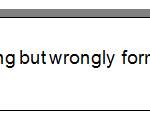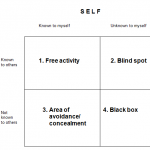A pearl of a sentence: The "basic hardware" of a conflict – whether it is of a professional or private nature – includes those involved making accusations of each other. However, not least thanks to their very structure, accusations are not a suitable way to cause the other person to change his behaviour. […]
Author Archives: Leadion
conflict levels
Developed by Ulrich Grannemann There are three main types of conflict: 1. Factual conflicts The first level is the so-called factual, content or informational conflicts. Here, there are differences in the view of the world or of reality. There are differences in the scope, depth or even type of information about particular […]
reorganisation and co
Reorganisation and Co.. Changes – Now what? The significance of reorganisation and an example of a support format Alongside personality and family, work has existential significance. Massive turning points and disruptions in the workplace can sometimes lead to damage to a person’s satisfaction and fundamental motivation which is very difficult to repair. They can cause […]
delegation
Preparatory questions for staff with management responsibility Eight W-rules for delegation: 1. What needs to be done (content)? What are the individual tasks to be achieved? What is the desired result? What are acceptable differences from the desired result? What difficulties can be expected? […]
communications in work prozesses – SUZIBEKUFF
Developed by Ulrich Grannemann Communication in work processes can also be described as production of cognitions. Whether we are talking about conversations, meetings, workshops or entire projects the objective is always the creation of an intellectual product. The basic circle or rough structure of the communication can be described as Input – decision […]
goals, functions, indicators and types
“Goals describe aspired states in the future.” Functions and purposes Leadership goals intend to create as much agreement as possible on the things to be achieved in the future. 1. Goals therefore have a communicatory function (the supervisor and the co-worker have the same pictures and ideas in mind about future results […]
motivation
1. The term "motivation" The word "motivation" comes from the Latin "motivus", meaning to trigger movement. Motivation refers to internal processes (driving forces, needs, attitudes, interests, will) which cause a person to display certain behaviours more often, for longer, more intensively or in a more targeted way (according to Fröhlich & Drever, 1983). Human […]
leadership pyramid
Ulrich Grannemann Leadership pyramid How can leadership activities and tasks the sensibly sorted? The purpose of the leadership pyramid is to help with orientation for the breadth and complexity of the tasks and to assist with identifying any neglected leadership areas. Leadership activities can be divided into 4 levels: […]
graves spiral dynamics
Name Meme (doctrine) Metaphor Popular names Fundamental motive Thinking Structures Process 8 Globalist Holistic Colour of the ocean, seeing the earth from space Global view Attention on the whole world dynamic, actions on a macro level holistic global flowing / ecological 7 Opportunity-seeker Integrative Solar energy, alternative technologies Flexible […]
the johari window
The four windows can be described as follows: Window 1: The area of free activity or the so-called "open self" is the part of the personality (e.g. motivations, behaviour etc.) which is known to both myself and others (colleagues, friends, staff members etc.). This part is usually very small in new groups. […]


